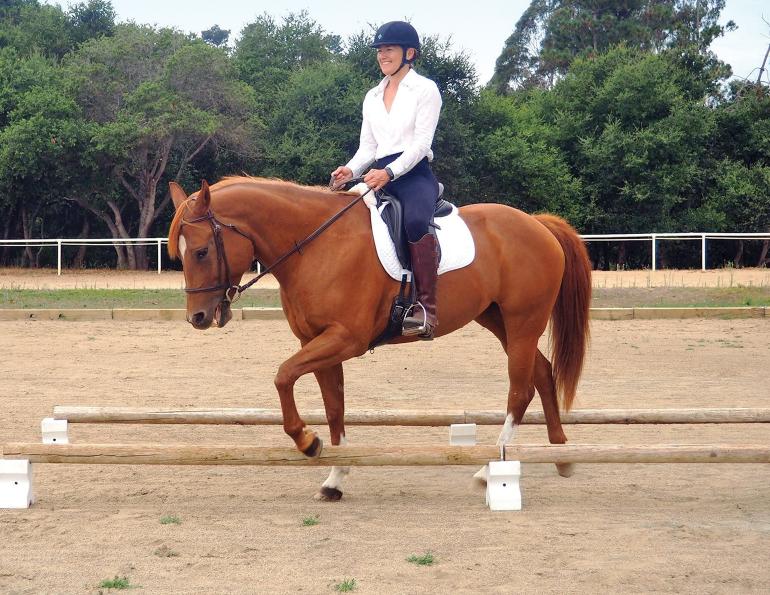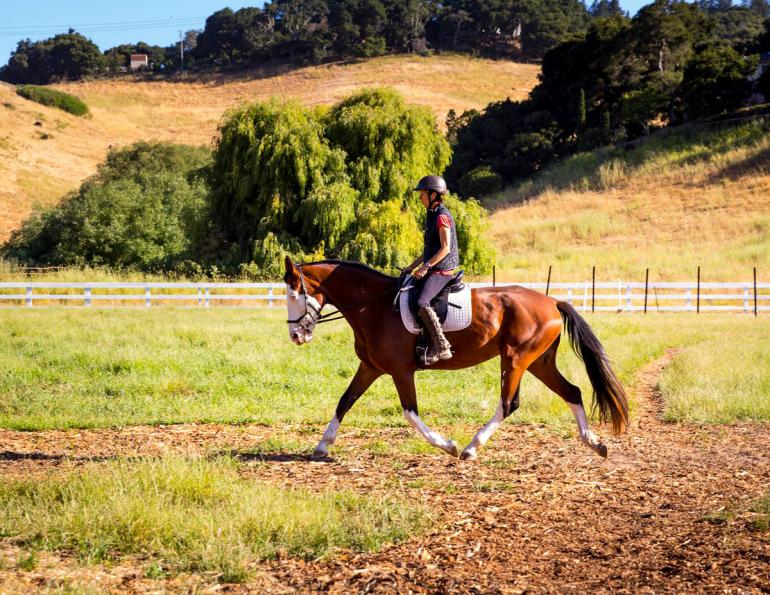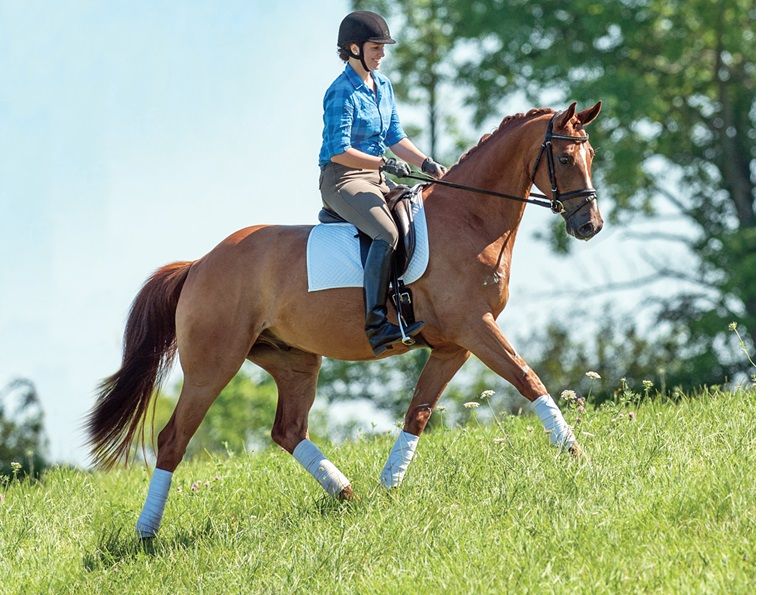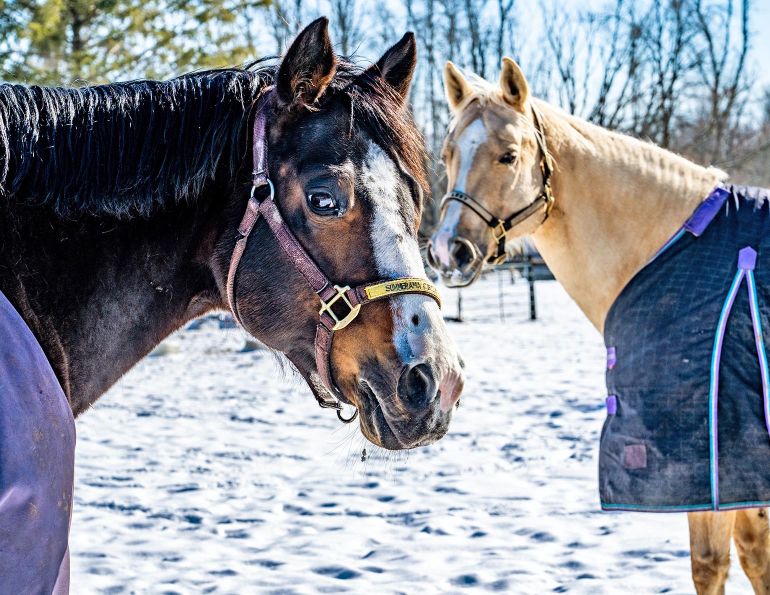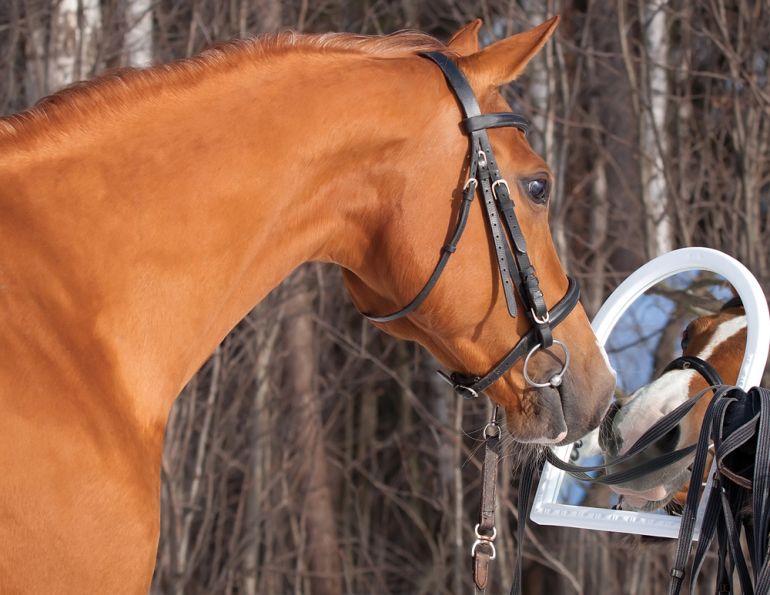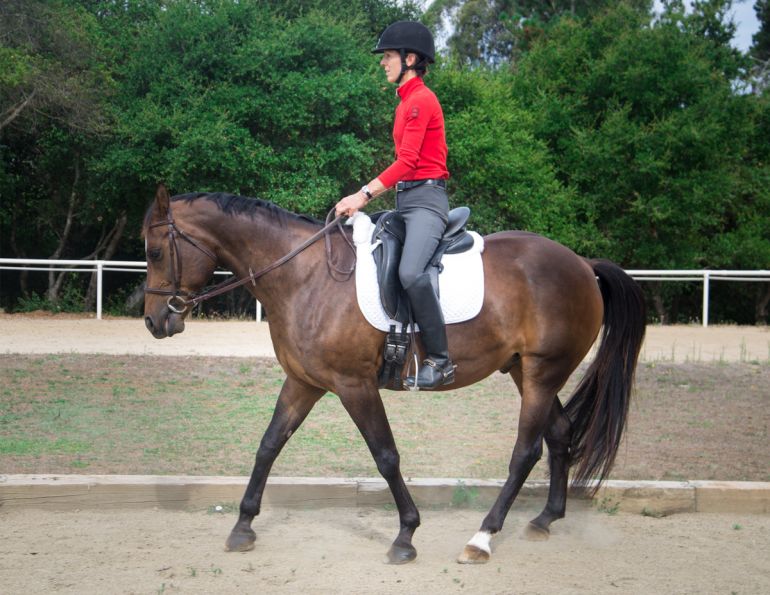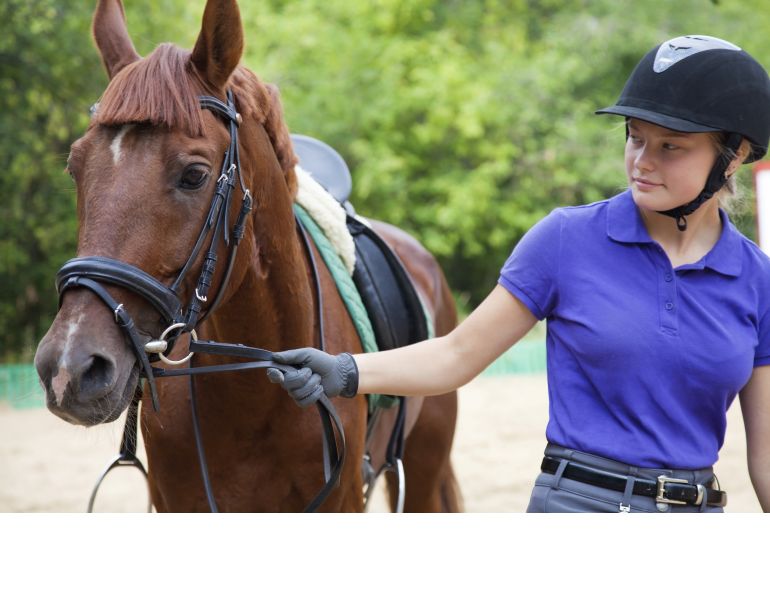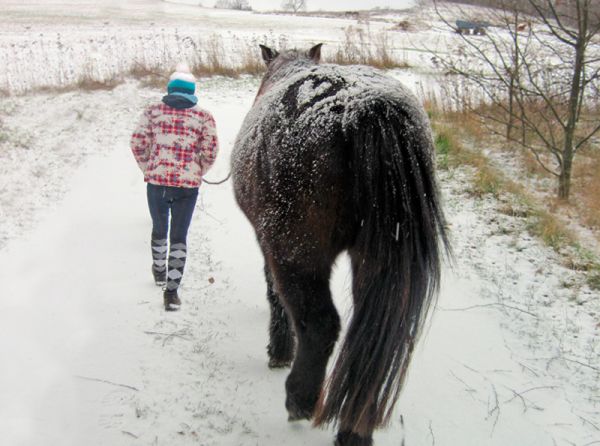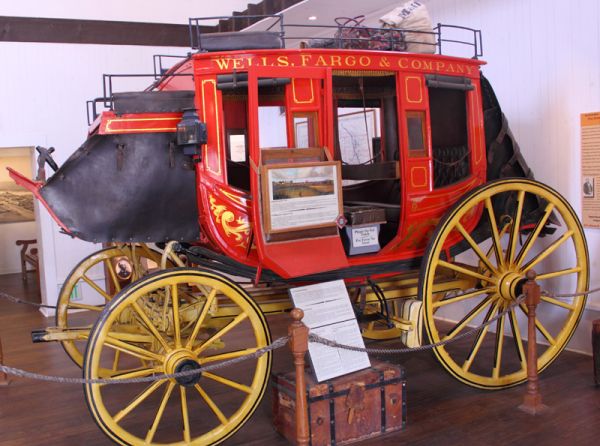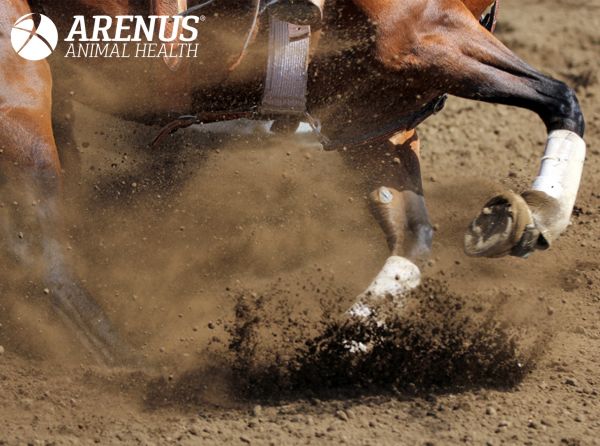Stability Before Strength
By Jec A. Ballou
Balanced muscular development cannot happen without first achieving a body that can stay stable throughout movement. In other words, a horse that is wiggling around trying to find balance, or one that has found balance by adopting a crooked posture, cannot develop strength in the ways that lead to better performance. Before a horse can add power to his locomotive muscles, he needs to find joint and limb stability while moving in his basic gaits.
A horse that drifts off his line of travel or feels like a “noodle” underneath his rider needs to first resolve these wiggles and wobbles. This kind of horse needs better awareness and control of foot placement, and also the ability to maintain alignment of his spinal joints during movement.
Sometimes this happens by activating and waking up the nerve signals that transmit information to the central nervous system about a joint’s position in time and space. Other times, it is necessary to add tone to the small muscles located near these joints. Fortunately, simple ground pole routines can help address both of these scenarios.
Below are four of my favourite exercises for awakening a horse to what his feet are doing, and then organizing and coordinating his body over top of them. Practiced daily for a period of two weeks or longer, they promote the stability a horse needs to then develop strength. All of these exercises require minimal materials and time to set up, so they can easily become part of your regular routine. Because they activate very finely tuned motor control, they are most effective when practiced in succinct periods. With each exercise, aim to get the desired and specific response up to ten times, but do not repeat the exercise to the point of dullness or boredom. A good rule of thumb is to practice each exercise for about one minute.
Straddle a Pole (Figure 1)

Photo courtesy of Jec A. Ballou
As the horse coordinates his limbs to abduct and straddle the pole, he releases tension from his bottom muscle chain. He also activates the deep hip stabilizing muscles, which play a cybernetic role communicating to the brain about a limb’s position and tonicity.
- Place a single pole on flat ground. Ideally, the pole should be 10 to 12 feet in length.
- Lead your horse to approach the pole straight from one end.
- Pause briefly for a second or two to ensure your horse is listening well and not rushing.
- Now very gently, one tiny step at a time, lead him forward with the pole under his midline.
- Stop when he is fully straddling the pole and give him a pause to settle in that position,
- Now ask him to take one step backwards, continuing to straddle the pole. Then bring him one step forward again.
- Continue this motion of stepping him backwards and forwards while straddling the pole.
Walking Over Poles at an Oblique Angle (Figure 2)
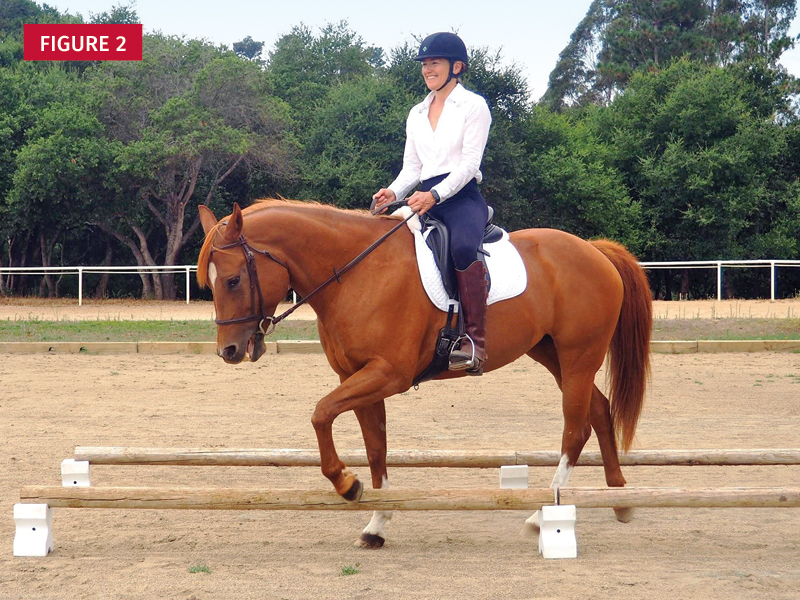
Photo courtesy of Jec A. Ballou
Rather than using inertia by traveling straight across, a horse needs more joint control when crossing poles at a diagonal angle. In this exercise, poles can either be flat on the ground or raised to a height of four inches. It can be performed ridden or from the ground.
- Place four to six poles as shown, spaced for walking (2.5 to 3 feet apart).
- Walk your horse in a diagonal angle across the poles.
- Maintain a lively tempo; your horse should take just one step between each pole, not more.
Figure-of-Eight Poles (Figure 3)
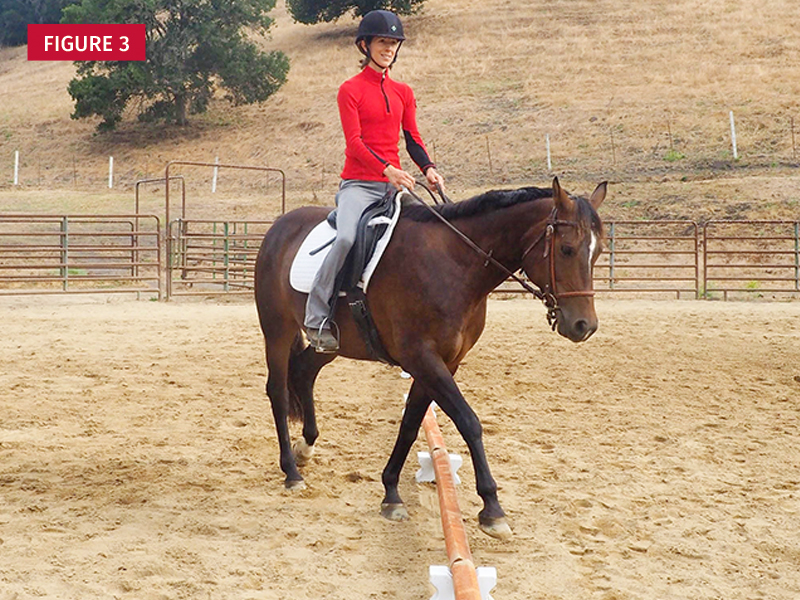
Photo courtesy of Jec A. Ballou
Quick changes of direction combined with lateral spinal flexion to recruit the abdominals helps increase side-to-side balance or symmetry in the horse’s movement. The steady rhythm of this exercise along with the frequent postural adjustments provides constant stimulus to the horse’s balance and coordination. Practiced consistently, this motor control becomes a habit.
- Place two 10- to 12-foot poles spaced 3 feet apart and raised to a height of eight inches.
- Ride your horse in a marching walk making a figure-of-eight as shown.
- Concentrate on bending your horse’s body around the ends of your figure-of-eight.
- Be sure to cross over the poles at a diagonal angle as shown. Many horses will try to shift their bodies to walk straight across the poles. Be very exact with your geometry.
Back and Forth Across a Single Pole (Figure 4)
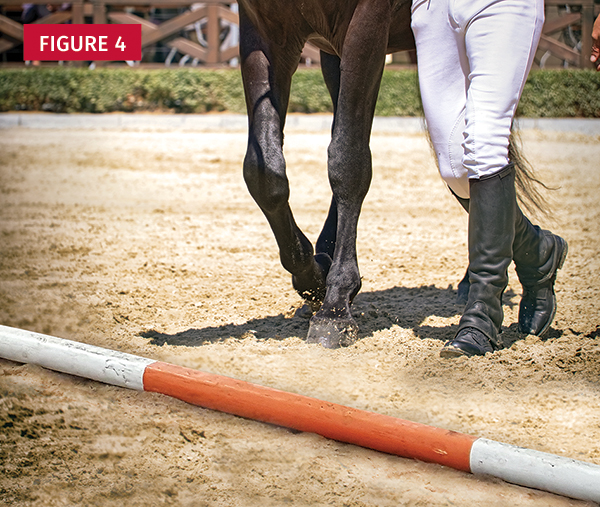
Photo: Shutterstock/Encierro
The action of pulling his scapula deliberately backwards counteracts the horse’s natural tendency, which is to fall forward with his weight on this front legs. For that reason, this exercise provides novelty and stimulus to the horse’s deep shoulder muscles that are otherwise often locked in unhelpful patterns of movement. You can do this exercise from the saddle or from the ground, although I always introduce it first from the ground to ensure correctly relaxed movement.
Most horses initially step on top of the pole when backing over it. This resolves within a few repetitions, so stick with the exercise even if it gets a little disorganized at first. Remember, disorganization is often a result of novel stimulus that leads to positive changes.
- Place a single pole on the ground.
- Stand your horse perpendicular to the pole, as though you are going to walk across it.
- Ask the horse to step just his front feet across the pole, then pause. The pole will be under his belly at this point.
- Now ask him to step backwards with both front feet back across the pole.
- Again, ask just for his front feet to step over the pole and then pause briefly. Repeat this sequence, walking just the front feet back and forth over the pole.
Main Photo Courtesy of Jec A. Ballou



